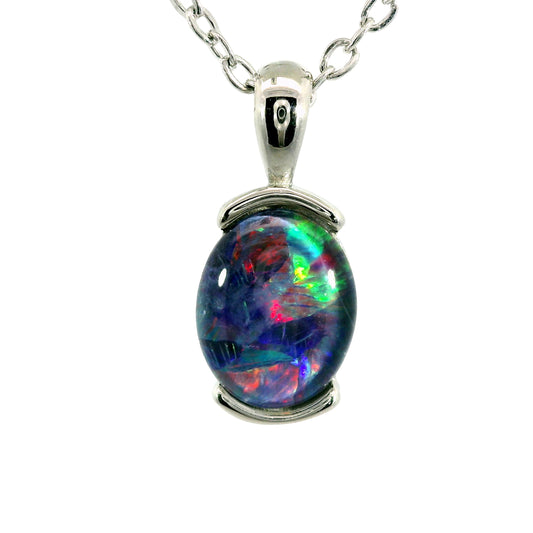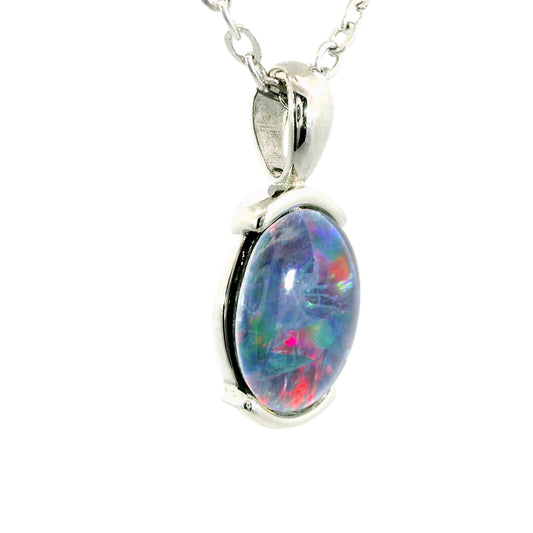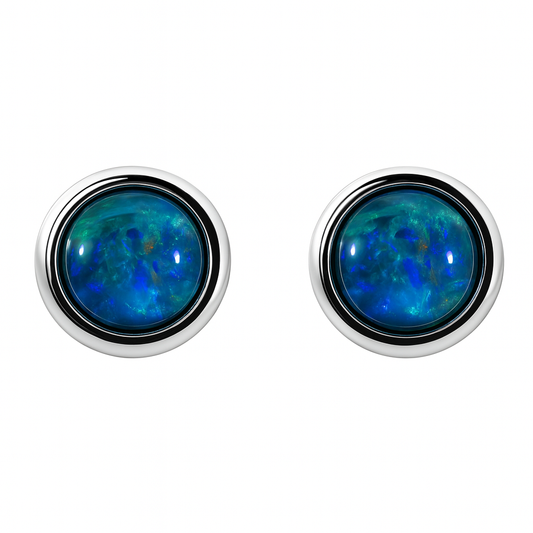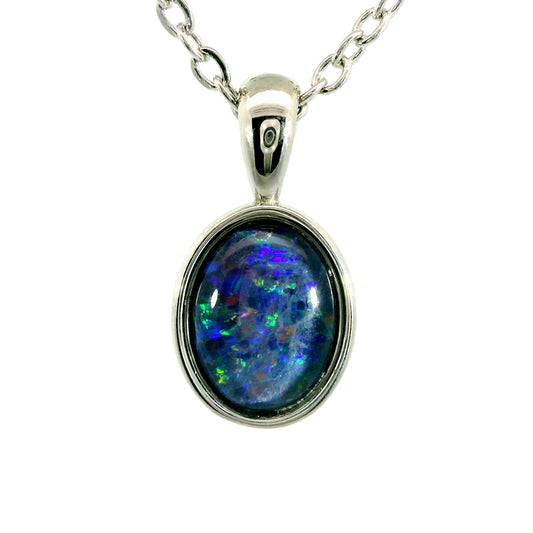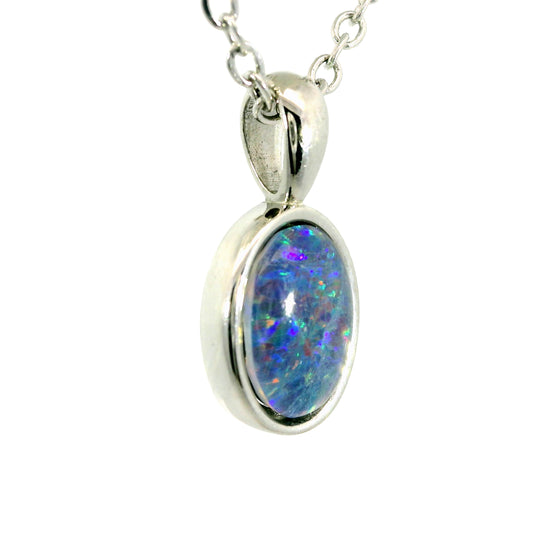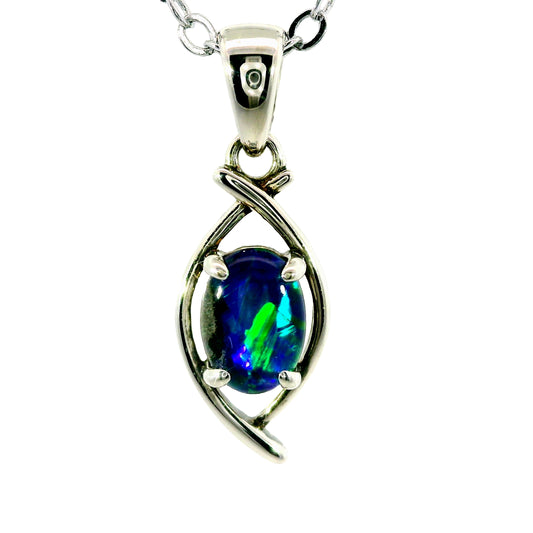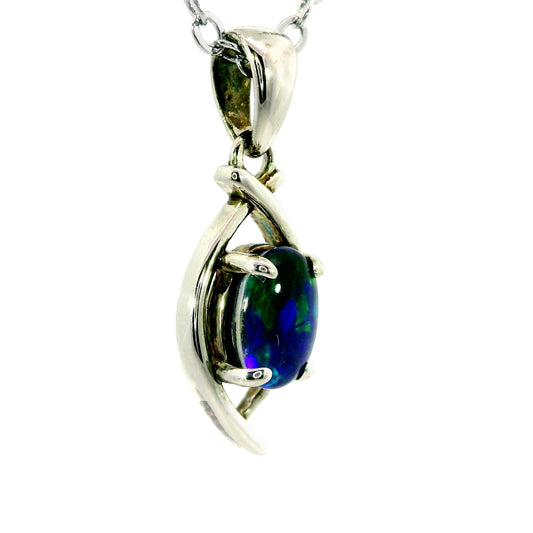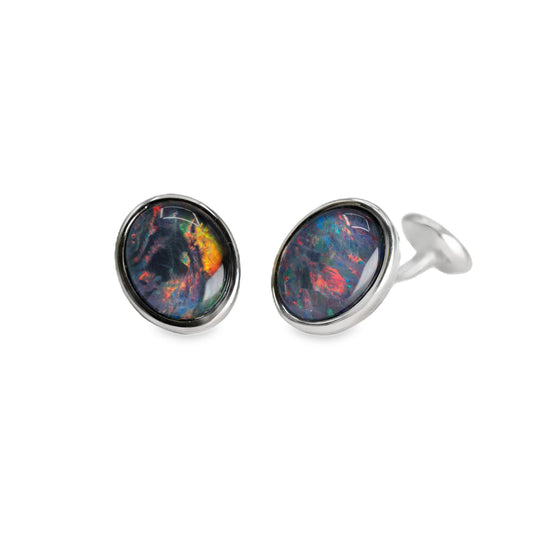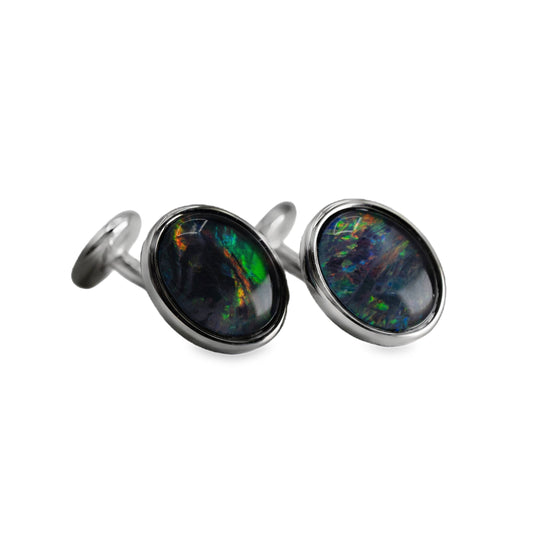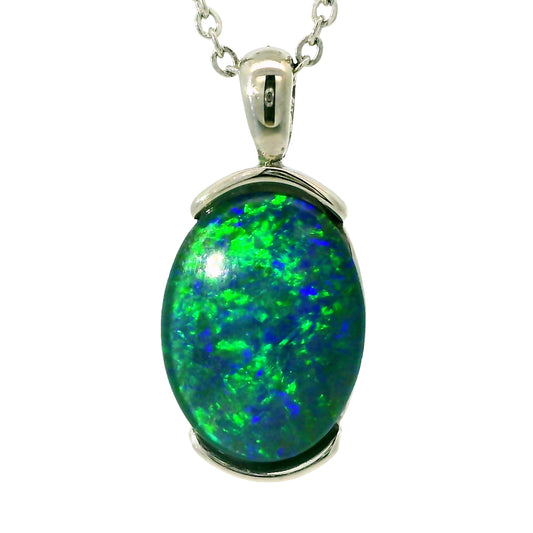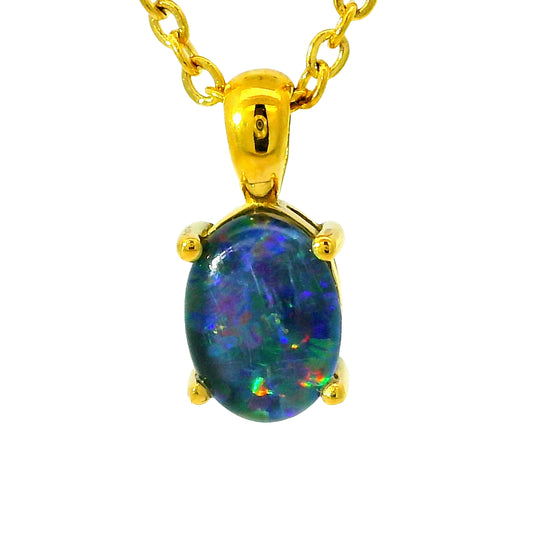Key Factors in Opal Values: Brightness and Body Tones
To say that each opal is unique and unrepeatable is a statement that should not shock you. Due to the very nature of their existence, opals are a rare anomaly, which is not only reflected in their appearance, but in their pricetag. Of course, the main factors must be considered:
- Body Tone
- Play of Colour
- Pattern
- Cut and shape
These are all terms that anyone who knows opal should be familiar with, as they are most often the very reason why your eye is drawn to such a stone. However, there is one crucial characteristic that is frequently overlooked by the untrained eye: brightness.
Put simply, the term 'brightness' is a label given to how our eyes perceive the 'reflecting light' that moves through the hydrated silica. These spheres of judrated silica act like a prism, splitting white light into the spectral display of colour we've come to love in the Australian gem. This means that, due to opal jewellery not being a static object, the 'brightness' can be influenced by the environment that surrounds it.
Viewing "how much light appears to shine from something" can seem like quite a simple task. Still, such words have become the foundation of interconnected opinions from jewellers worldwide, classifying brightness as it relates to visual cues and personal opinion; this has caused a recent rise in the term ‘brightness’ being used as a synonym for the term ‘luminance’, in addition to the (incorrect) usage of ‘radiance’. Thankfully, there is a definition within the US Federal Glossary of Telecommunication Terms (FS-1037C), the term ‘brightness’ should be used exclusively for non-quantitative references to the physical function and sensation of light. This allows for 'brightness' as a term to be distinct from physical measurements seen in light intensity (referred to as 'luminance' in telecommunications and lighting contents).
With all this being said, there is a question that still lingers: how can one correctly use 'brightness' to assess an opal? Currently, there exists a scale that is utilised by jewellers globally, which allows for one to judge what 'level' a gemstone sits at. This overall allows for a better understanding of not only the gem's value, but can lead to a deeper appreciation for what makes opal so truly unique.
B7 [Very weak] - The opal shows hints of colour only in sunlight.
B6 [Weak] - The opal shows a weak play of colours both under the sunlight and the artificial light of the lamps.
B5 [Not very bright] - The opal shows a certain play of colours both under the sunlight and the artificial light of the lamps.
B4 [Bright] - The opal shows a beautiful play of colours both under sunlight and artificial light. It does not show any colour when shaded away from light.
B3 [Very bright] - The opal shows a nice play of colours under weak artificial light and a very good one under the sun's rays. If put in the shade you can see the colors.
B2 [Brilliant] - The opal has an intense play of colours both under artificial and solar light and remains very bright when seen in dim light.
B1 [Exceptionally Brilliant] - The opal has a vivid play of colours and electric reflections in any light and is even brighter when seen in dim light.
The 'Opal Body Tone Guide' has been created by the Opal Association of Australia as a way to correctly categorise and asses the qualities of black and boulder opal. Many jewellers, including Australian Opal Cutters, utilise this tone chart.
The term 'body tone' (also referred to as 'base tone' or 'background tone') is the label given to the 'darkness' that is seen within an opal. A darker opal will have a base that allows for contrast to affect the colours, ultimately making them brighter. Usually, a stone is assessed face-up and cross-referenced against a ‘tone chart’. Within this process, the colours will be ‘ignored’, with a jeweller instead focusing on if the stone is jet black (N1) or transparent (N9).
Body Tone N1 - N4 is for black-toned opals.
Body Tone N5 - N7 is for light-coloured opals.
This chart is not confined to places such as Lightning Ridge and Coober Pedy, and has been to impact the opal market worldwide,
Opals are truly extraordinary gemstones; there's no denying that. It is because of their unique characteristics that terms such as 'brightness', 'body tone', and 'play of colour' must be created. Understanding these elements is not only integral to understanding opal value, but also aids in deepening our appreciation for their complex beauty.












































































































